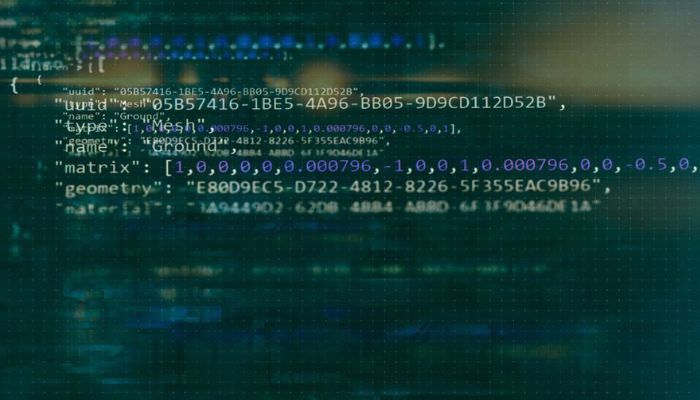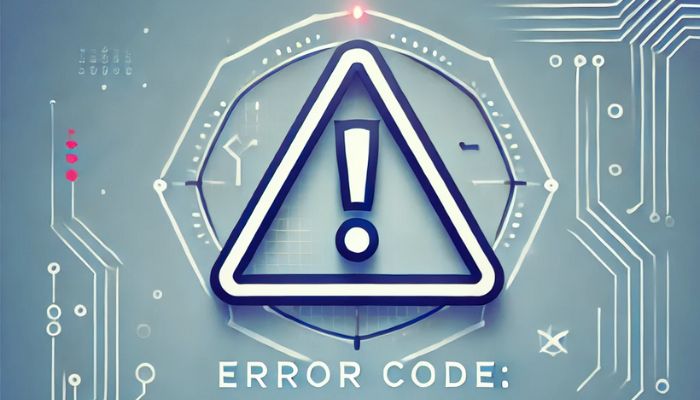Error Code 7tayf8ynkbsrdfjrwf2jei.0.5
In the vast digital landscape, encountering error codes is nearly inevitable, whether you’re a seasoned IT professional or a casual computer user. One particularly perplexing error that many might come across is Error Code 7tayf8ynkbsrdfjrwf2jei.0.5. This code may appear cryptic at first glance, presenting a string of characters that might not immediately make sense. However, understanding this error code is crucial to troubleshooting and ensuring smooth operation of your computer systems.
In this article, we delve deep into what Error Code 7tayf8ynkbsrdfjrwf2jei.0.5 means, explore its common causes, and provide practical solutions and tips to prevent this error from recurring. Our goal is to equip you with the knowledge to handle this error confidently and efficiently.
What is Error Code 7tayf8ynkbsrdfjrwf2jei.0.5?
At first look, Error Code 7tayf8ynkbsrdfjrwf2jei.0.5 seems to be a jumble of letters and numbers that offers little information on the surface. However, each segment of this code can provide insights into the nature of the error. Such codes are generated by systems to indicate specific problems, which can range from software conflicts to hardware malfunctions.
This error code typically arises within software applications or operating systems as an alert to a malfunction that prevents normal operation. It is a system-generated response to an internal event that the existing software logic cannot handle without intervention.
Common Causes of Error Code 7tayf8ynkbsrdfjrwf2jei.0.5

Software Conflicts or Bugs
One prevalent cause of this error is conflicts between software applications or inherent bugs within a program. When applications that aren’t fully compatible are run simultaneously, they might interfere with each other’s operations. This can cause the system to become unstable, which might trigger an error such as 7tayf8ynkbsrdfjrwf2jei.0.5.
Additionally, bugs within the software itself, such as coding errors or memory leaks, can also be culprits. These bugs might not be evident during initial software testing but can surface during regular use, especially under unique conditions that weren’t anticipated during development.
How to Fix It:
- Update your software: Regular updates often fix bugs that can lead to such errors.
- Close conflicting programs: Shut down other programs to see if the error resolves, helping identify the conflict.
- Reinstall the software: Sometimes, a fresh installation can fix hidden issues that cause system errors.
System Corruption or Configuration Errors
System files can become corrupted due to a variety of reasons, such as improper system shutdowns, virus attacks, or faulty hardware. These corruptions might lead to misread data or operations, causing errors.
How to Fix It:
- Run a system scan: Tools like System File Checker (SFC) can find and fix problematic files.
- Restore system settings: Using system restore to go back to an earlier point before the error occurred can be effective.
- Check for malware: Ensure your system is clean from viruses or malware that could corrupt files or alter settings.
Insufficient Resources (RAM, CPU)
Lack of adequate system resources can also lead to this error. If your system runs out of RAM or CPU power, particularly when running demanding programs, it might crash or freeze, leading to significant errors.
How to Fix It:
- Close unnecessary applications: Reduce the load on your system to see if the error resolves.
- Upgrade your hardware: If resource issues are frequent, consider upgrading your system’s RAM or CPU.
Network Connectivity Issues
For software that relies on network connections, disruptions or poor network states can trigger error codes. This is common in applications that need to communicate continuously with a server or other networked services.
How to Fix It:
- Check your network: Ensure a stable and fast connection.
- Reset network settings: Sometimes a fresh network setup can resolve connectivity issues.
- Use a wired connection: If problems persist on Wi-Fi, try switching to a wired network to see if it improves stability.
How to Troubleshoot Error Code 7tayf8ynkbsrdfjrwf2jei.0.5

To effectively troubleshoot this error, a systematic approach is essential:
- Restart Your System: Often, a simple reboot can clear out the error.
- Check for Software Updates: Ensure all your software is up-to-date.
- Scan for Malware: Use a trusted antivirus program to scan your system.
- Review System Logs: Check system logs for any clues as to what might be causing the error.
- Reinstall Problematic Applications: If a specific application is consistently causing the error, try reinstalling it.
- Contact Support: If the issue persists, contact the support team for the software in question.
Preventing Error Code 7tayf8ynkbsrdfjrwf2jei.0.5
Prevention is better than cure:
- Regular Updates: Keep your software and operating system up-to-date to avoid known bugs.
- Regular System Maintenance: Perform regular maintenance like disk cleanups and defragmentation.
- Monitor Resources: Keep an eye on your system’s resource usage and manage it efficiently.
- Stable Network: Ensure your network connections are stable and robust.
Conclusion
While Error Code 7tayf8ynkbsrdfjrwf2jei.0.5 might be daunting at first, understanding its origins and knowing how to handle it can alleviate much of the stress associated with such errors. By keeping your system well-maintained and up-to-date, you can significantly reduce the likelihood of encountering this error and ensure your computer systems run smoothly and efficiently.
FAQs About Error Code 7tayf8ynkbsrdfjrwf2jei.0.5
1. What is Error Code 7tayf8ynkbsrdfjrwf2jei.0.5?
Answer: Error Code 7tayf8ynkbsrdfjrwf2jei.0.5 is a system error that can occur due to various reasons, including software conflicts, system corruption, insufficient system resources, or network connectivity issues. It typically indicates that a process in your computer system has failed due to one of these underlying issues.
2. What causes Error Code 7tayf8ynkbsrdfjrwf2jei.0.5 to appear?
Answer: This error code can appear due to:
- Software conflicts or bugs.
- System file corruption or configuration errors.
- Insufficient computing resources (like RAM or CPU).
- Network connectivity problems, especially in applications requiring internet access.
3. How can I fix Error Code 7tayf8ynkbsrdfjrwf2jei.0.5?
Answer: You can try several approaches to fix this error:
- Restart your computer to clear temporary conflicts.
- Update your software to fix bugs that might be causing the error.
- Scan for malware using a reliable antivirus tool.
- Increase system resources by closing other applications or upgrading your hardware if necessary.
- Check your network connection and improve stability if needed.
4. Is Error Code 7tayf8ynkbsrdfjrwf2jei.0.5 harmful to my computer?
Answer: While the error code itself is not harmful, it indicates that something is wrong that could affect your computer’s functionality or performance. Ignoring this error can lead to more significant problems, such as system crashes or data loss.
5. Can Error Code 7tayf8ynkbsrdfjrwf2jei.0.5 result in data loss?
Answer: Yes, if not addressed, this error code can lead to situations where applications crash or shut down unexpectedly, which might result in unsaved data being lost. However, the error code itself does not delete data.
6. How can I prevent Error Code 7tayf8ynkbsrdfjrwf2jei.0.5 from occurring?
Answer: To prevent this error, ensure that:
- Your software is up to date.
- Your system is free of malware.
- You regularly perform system maintenance tasks like disk cleanup and defragmentation.
- You monitor and manage your system resources effectively.
- You maintain a stable and strong network connection.
7. Should I contact tech support if I see Error Code 7tayf8ynkbsrdfjrwf2jei.0.5?
Answer: If common troubleshooting steps do not resolve the error, it is a good idea to contact technical support. Provide them with the error code and any other relevant information to help them diagnose and resolve the issue more efficiently.
8. What tools can I use to diagnose and fix Error Code 7tayf8ynkbsrdfjrwf2jei.0.5?
Answer: You can use built-in Windows tools like the System File Checker (SFC), Disk Cleanup, and Task Manager to manage resources and check for file corruption. For network issues, resetting your network settings might help. Additionally, using reliable third-party antivirus software can also aid in detecting and removing malware.

